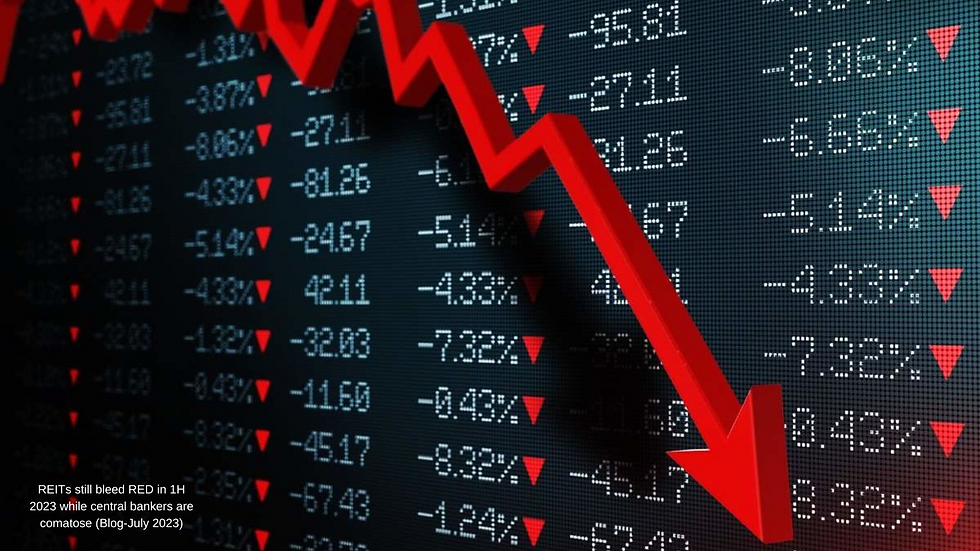INCORPORATING BEHAVIORAL FINANCE IN MODERN STOCK ANALYSIS
- by Gabriel Yap

- Nov 18, 2017
- 3 min read
11/2014-
As 2014 draws to an end, the FTSTI seems to have not gone anywhere. It started the year at 3,167 and currently sits at 3,274 at end-November 2014 or a mere gain of 107 points. If one uses technical analysis to pick winning stocks, it would seem that 2014 would have been a washout year.

Actually, for me, 2014 has been another profitable year. Incorporating behavioral finance in my timing of buy/sell decisions after a rigorous fundamental analysis framework for my investment portfolio, has again been great for me.
Behavioral finance concentrates on why market participants continue to make systematic errors or bias, contrary to the normal economic assumption of rational investors. Such errors affect prices and hence trading profits and creates market inefficiencies which may exist for a while. The smart investor should always be cognizant of such opportunities.
I started the year by taking long positions in the Indian and Indonesian currencies and some good stocks that make up the SENSEX and JCI indexes as I had considered the severe sell-offs the Rupee and Ripiah as excessive at end-2013 when foreign investors were pounding both markets due to their respective current account deficits. (See my May 2014 article)
To me, the excessive pessimism of both markets then was an exemplification of what behavioral finance have highlighted – investors tend to over-react to bad information in extreme cases of crisis. I like to watch what the popular media dish out – daily coverage and emphasis of “crisis” and “declines” with little useful analysis serve to exaggerate noise trading and encouraged head pessimism.
One of the difficulties in understanding the dynamics of Emerging Markets like India and Indonesia has been the presence of “noise” as pointed out by Fischer Black, a noted Behavioral Finance economist. Random world events are always making changes in valuations that are difficult to extract from any deterministic forces that may be present.
Thus, when valuations became real cheap after sharp sell offs, investors tend to become “fearful” when they should have viewed those situations as “cheap” for bargain hunting!
This same phenomenon took place again in April 2014 in Ukraine and Russia. Sharp sell-offs in the 7.95% 10-year Ukraine bond to 80 cents to the dollar was another great opportunity not to have been missed.

The next crisis that erupted started on 26th Sep 2014 with student protestors in HK, organizing a sit-in as they were demanding universal suffrage from the political leaders.
In reaction to the protest coinciding with the busy Golden Week Holidays starting on 1st Oct 2014 when millions of Mainland Chinese visitors cross over to HK for their yearly shopping trips of branded luxury items like Prada, Gucci and Chanel, the Hang Seng Index took a 2,000 points dive reaching a low of 22,900 on 16th Oct 2014.
Not surprisingly, HK-listed Prada was sold off to HK47 while jeweller Chow Tai Fook dipped below HK10. Casino stocks like Sands China, Galaxy and Wynn Macau were literally “seeing stars” as their share prices were bashed by more than 30%!
Indeed a bargains galore awaited the smart investor.
The behavioral science works of Amos Tversky and Daniel Kahneman posited that people tend to use irrational standards for evaluating uncertainty, and that these standard don't make sense with respect to true probabilities.
Indeed, if investors had been wise to true probabilities, the Hang Seng Index at the low of on, would have been a good entry point in view of its relative cheap PER valuation and growth prospects.
Thus, be greedy when others are fearful. Understanding behavioral finance is key.
Gabriel will be sharing his views on 2015 Market and Picking Winning Stocks in an upcoming event.
For more information, please visit: http://notice.shareinvestor.com/email/20141206_investandprosper/index.html




Comments